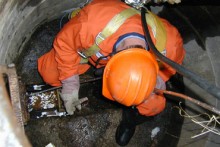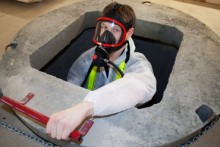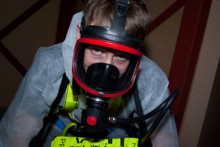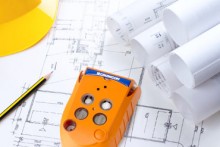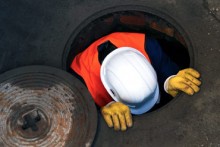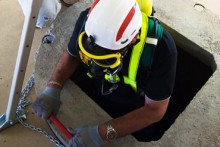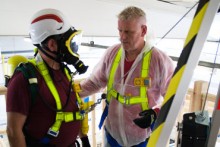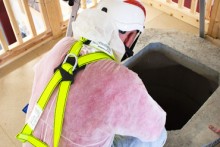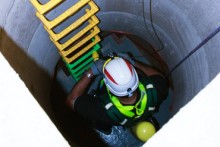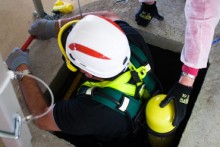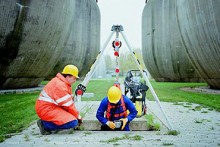The risks posed by confined spaces are vast and an understanding of these dangers, how to avoid them and how to spot dangers before they cause incidents is of the utmost importance for all employers and employees.
A dangerous environment in a confined space does not have to be present initially, as it is possible for a danger to appear over time. Learning to spot how this might occur before it happens is an essential preventive measure and the following list outlines the common dangers that can arise within a confined space.
- Lack of Oxygen – the environment becomes starved of oxygen, leading to the risk of light-headedness, nausea, unconsciousness, brain damage and death if the brain is starved of oxygen for a significant period of time. This can occur by:
– The action of groundwater on chalk and limestone, causing carbon dioxide to displace normal air
– The reaction of cargo within ship holds, freight containers, lorries etc with oxygen in the air
– Inside steel tanks and vessels when rust forms
- Poisonous gas, fumes or vapour caused by:
– Entrance into tanks or vessels from connecting pipes
– Leakage into trenches and pits in contaminated land such as old refuse tips and gas works
- Liquids and solids. When entering the space, or releasing gas into it, liquids and solids can cause severe damage to trapped individuals. Free-flowing solids such as grain can also partially solidify or ‘bridge’ in silos, causing blockages which can collapse unexpectedly
- Fire and explosions
- Residues left in tanks, vessels etc which can give off gas, fumes or vapour
- Dust present in high concentrations
- Extremely hot or cold conditions leading to uncomfortable body temperature
- Machinery being used may require special precautions, such as provision of dust extraction from a portable grinder, or special precautions against electric shock
- Gas, fume and vapour can arise from welding, or by use of volatile and often flammable solvents, adhesives and other substances
- If access to the space is through a restricted entrance, such as a manhole, escape or rescue in an emergency will be more difficult
Avoiding Entrance to a Confined Space
If at all possible the work should be carried out without risking an incident due to hazards within the confined space. If the work can be done in another way, even if this is more complex, it should be carried out in this manner to prevent injury to employees.
Ask yourself if the work is really necessary, or could you:
- Modify the structure of the confined space so that entry is not necessary
- Have the work done from outside by some of the following options:
– Clearing blockages by the use of remotely operated rotating flail devices, vibrators or air purgers
– Carry out inspection, sampling and cleaning can be done from outside using the appropriate equipment and tools
– Use remote cameras for the internal inspection of an area

